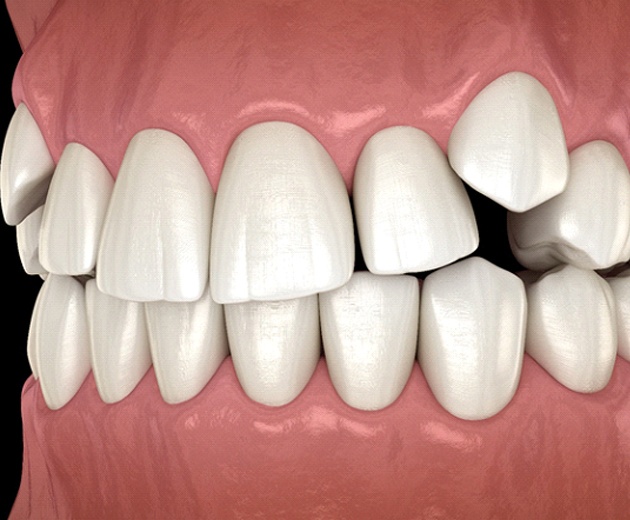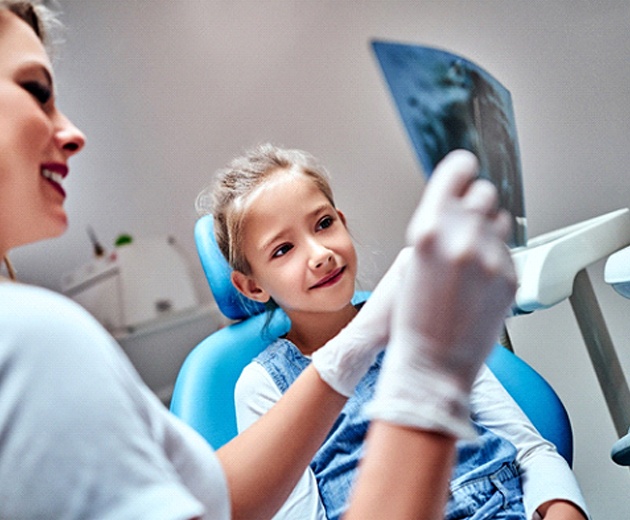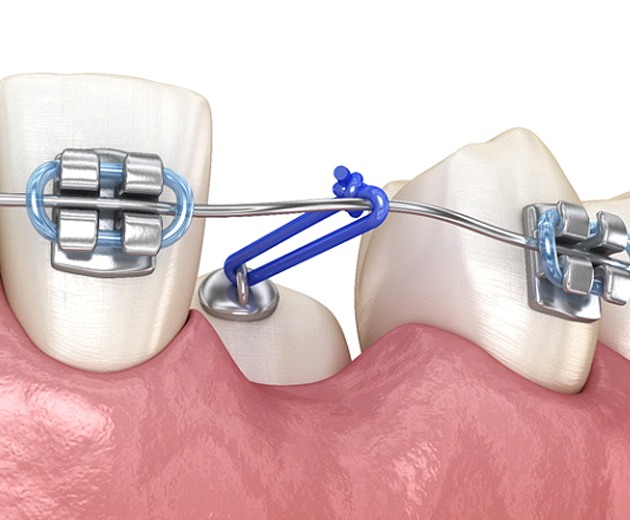Impacted Canines – Alexandria, VA
Promoting Proper Oral Development
Here at Northern Virginal Oral, Maxillofacial & Implant Surgery, we offer a broad range of services, including those that aren’t often talked about in popular discussions about oral health. For example, we offer treatment for impacted canine teeth. On this page, you’ll learn what impacted canines are, why they are problematic, and how an oral surgeon in Alexandria can help to address them.
Why Choose Northern Virginal Oral, Maxillofacial & Implant Surgery for Impacted Canine Treatment?
- Board-Certified Oral Surgeons
- Multiple Convenient Locations
- Advanced Technology
What Are Impacted Canines?

An impacted tooth is simply one that does not fully erupt from the gumline. Teeth can be fully impacted (the crown never makes an appearance outside of the gums) or partially impacted (a portion of the tooth erupts). Most commonly, this issue affects the third molars at the back of the mouth, which are also known as the wisdom teeth. However, it can affect other teeth as well, including the canines. Your canine teeth, also called cuspid teeth or eye teeth, are the pointy teeth near the front of your mouth. The top canines are more likely to be impacted than the bottom ones.
Diagnosis of Impacted Teeth

The earlier impacted teeth are diagnosed, the simpler treatment is. Around age 7, children should have all of their teeth counted and have an X-Ray performed so their dentist can get an idea of how their adult teeth are developing. If there are any issues that might affect the eruption of the canine teeth, the dentist can recognize these and recommend the patient’s next steps. Generally, a patient may be referred to either an orthodontist or an oral surgeon — it depends on the cause of the impaction and how severe the problem is.
Problems Caused by Impacted Canine Teeth

Impacted canine teeth can cause a range of issues. For example, the canines play a significant role in proper occlusion (bite). If they are not in their proper teeth, the other teeth may not be aligned properly when the mouth is closed. It is also possible that the canines will try to erupt. However, if there is not enough room between the other teeth, the canines may push them out of place, leading to dental misalignment, as well as an increased risk of infection and tooth decay.
Treatment of Impacted Teeth

The most common and conservative method for addressing impacted canines is orthodontia. Braces can move the other teeth, creating space for the canines to erupt into their proper places. This often works if the impaction is diagnosed early enough in a patient’s life. In some cases, an oral surgeon must remove extra teeth or baby teeth that have not yet fallen out in order to make room for the canines.
If the patient is past age 13 – 14, the canine teeth are unlikely to erupt on their own even if space is available. In such cases, an oral surgeon can help. The impacted teeth are exposed, and special brackets are placed on them. The brackets then guide the teeth into their proper places.
For older patients (40+), the impacted canines may be fused into place, meaning that they cannot erupt even with the help of special brackets. At that point, removing them altogether may be the best course of action. Later, they may be replaced with implants or a bridge.
Are you wondering what to do about your (or your child’s) impacted canine teeth? Contact us today — we are ready to answer all of your questions about this issue and possible treatment options.
